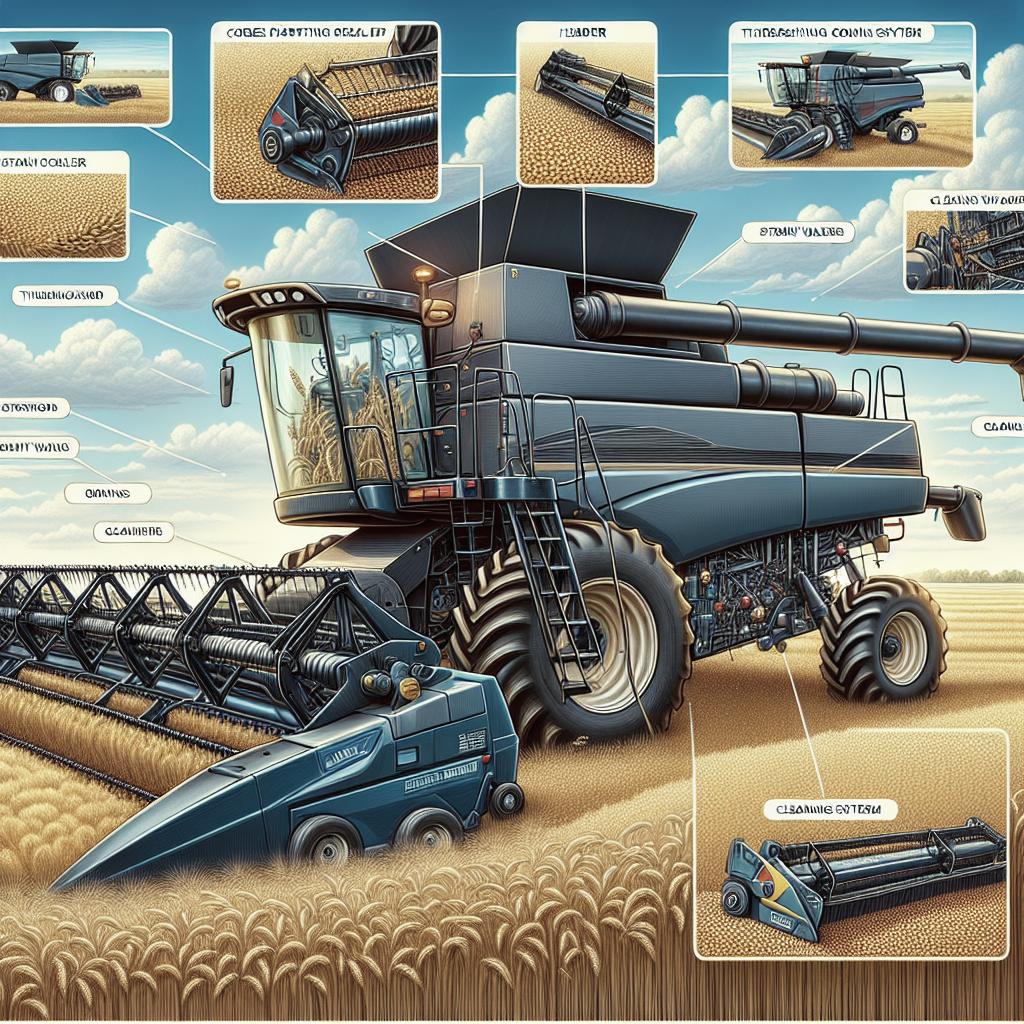In the realm of modern agriculture, few machines are as vital and impressive as the combine harvester. Known simply as the “combine,” this revolutionary piece of equipment combines several key harvesting processes into one seamless operation. This blog post dives into the specifics of what a combine is, how it operates, and its importance in advancing agricultural productivity. Additionally, we spotlight inspiring stories from the farming community, showcasing veteran farmers and cottage food businesses. If you’re curious about the inner workings of a combine or seeking motivation from resilient agricultural entrepreneurs, you’ll find this post both informative and inspiring.
What Is a Combine?
A combine harvester is a versatile piece of agricultural machinery designed to efficiently harvest a range of grain crops. The name “combine” comes from its ability to combine three separate harvesting operations – reaping, threshing, and winnowing – into a single process. This innovation has drastically reduced the labor and time required to harvest large fields, improving overall productivity in the sector.
Initially invented in the early 19th century, combines have evolved significantly over the years. Today’s combines are sophisticated machines equipped with advanced technology, including GPS for precision agriculture, moisture sensors for determining crop conditions, and automated steering systems. These features not only enhance the efficiency of the harvesting process but also contribute to more sustainable farming practices by optimizing resource use.
How Does a Combine Work?
The operation of a combine harvester can be broken down into several key stages. The process begins when the header cuts and gathers the crop. The header can be fitted with different attachments to accommodate various types of crops, such as wheat, corn, and soybeans. After the crop is gathered, it is fed into the threshing drum, where it is threshed to separate the grain from the stalk and husk.
Once the grain is separated, it moves to the cleaning section of the combine. Here, a series of sieves and fans work together to remove chaff and other debris from the grain. The clean grain is then transported by an auger into a grain tank located on the combine. Meanwhile, the remaining straw is expelled from the machine and left in the field to be baled or plowed back into the soil to enrich its nutrients.
You Might Also Like
Farmer Veteran’s Goal Remains to Serve People (VIDEO)
In this heartwarming video, meet a dedicated farmer veteran whose mission to serve people didn’t end with their military career. Discover how they have redirected their skills and passion into sustainable farming practices, influencing both their community and the agricultural landscape.
Farmer-Veteran Shares PTSD Journey (VIDEO)
Watch as a farmer-veteran candidly shares their journey with PTSD and the healing power of farming. This inspiring video illustrates how farming has become a therapeutic practice, helping them manage their condition while contributing positively to their environment.
Home Kitchen and Cottage Food Businesses Flourish in Illinois (VIDEO)
Dive into the world of home kitchen and cottage food businesses in Illinois. This video highlights innovative entrepreneurs who have turned their culinary passions into thriving small businesses, showcasing how local food movements are gaining momentum and enriching the community.
COMMENTS
Leave a Comment Cancel reply
Future Prospects
The future of combine harvesters is poised for even greater advancements. With the integration of artificial intelligence and machine learning, combines will become more autonomous, further enhancing efficiency and crop management. These technological innovations will enable farmers to increase yields while minimizing environmental impact, ushering in a new era of precision agriculture.
| Section | Content Summary |
|---|---|
| What Is a Combine? | Introduction to what a combine harvester is and its historical evolution. |
| How Does a Combine Work? | Description of the stages in the combine harvesting process, including reaping, threshing, and cleaning. |
| You Might Also Like | Spotlights on inspiring videos related to veteran farmers and cottage food businesses. |
| COMMENTS | Section for reader comments and interactions. |
| Future Prospects | Insight into future technological advancements in combine harvesters and precision agriculture. |


